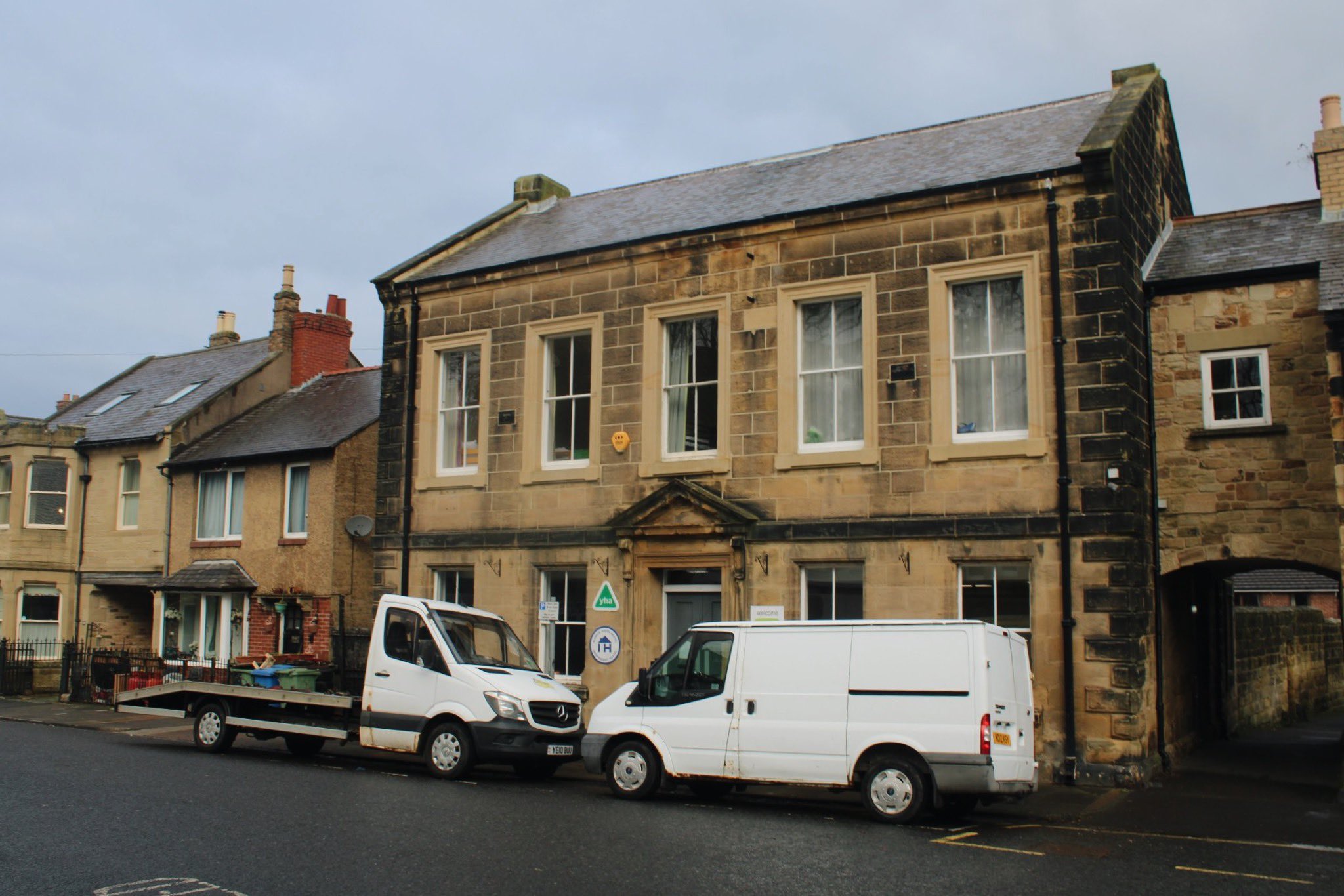
Alnwick
Alnwick Old Police Station
Last Updated:
20 Feb 2025
Alnwick
This is a
Police Station, Court House
55.411719, -1.706129
Founded in
Current status is
Extant
Designer (if known):

Grade II listed
This is the Police Station at Green Bat, later superseded by the police station we focused on the other day.
This imposing stone building was constructed in 1856 and somehow fit the police station and the town's court room. It did however used to stretch well back a good couple hundred metres, with separate buildings featuring cells and a work room. These buildings at the back were previously part of a prison here, holding a good couple hundred prisoners a year until the opening of Dobson’s Morpeth Gaol.
It was conveniently placed between the market and the workhouse. “Vagrants” and “tramps” make up the predominant reports for folk who got banged up here, sometimes drunk or in fits of anger with one man hitting someone else with the blunt end of an axe at the workhouse in 1886. There’s also quite a few burglaries on vicarage’s and farmhouses, I guess because rural crime was very easy to get away with.
Assailants and alleged perpetrators would be interviewed in this front building on the first floor, and if charged would be taken in the cells which through a door in the ground floor hallway. From there, there was a modest yard which still exists with further cells directly adjoining. Longer term criminals would be shipped off to Morpeth and later Newcastle. The town plan of the 1860s provide a revealing insight. This was also known as one of the most expensive prisons at the time, in part because barely anyone ended up being interned here.
It did remain the town police station into the 20th century, until it was superseded by the 1930s complex on Prudhoe Street. In later years, this became the district council treasury building and is now the Alnwick youth hostel with the buildings adjacent now forming part of it.
Listing Description (if available)


The Ordnance Surveys shown here depict the Green Bat area from the 1860s until the end of the 19th century. Originally, this lane was the southern fringe of the town and as there was greater space and capacity to place important infrastructure, it went on to form a precinct for various civic functions and facilities. It also replaced the towns wall here - dismantled to allow breathing space for development. One such was the police station, with houses of corrections previously set in Bondgate Tower & Bailiffgate, and even before that the castle itself. This site provided a more spacious and purpose built facility off the main lane to intern criminals until placed in the regional gaol at Morpeth.
Green Bat also featured the Duke's School over the road, the Militia near the pinfold, various smithies and close to the Mechanics Institute.

The Ordnance Survey of 1923, depicts Green Bat now forming the centre of Alnwick rather than sitting on its peripheries. Expansion continued the decades prior and will continue to do so with mid 20th century housing developments. The Dukes School on Green bat was already replaced with a much bigger facility off Hope House Lane, and large villas led up the hill to Swansfield Park Road.
The Police Station would only operate for another 8 years or so until becoming redundant.

The police station, now a youth hostel, in February 2025.

An aerial photograph from 1932 showing St Paul's Church and Green Bat, with the police station peeking through the trees. It would become redundant at this time. Source: © Historic England. Aerofilms Collection EPW040689 flown October 1932
